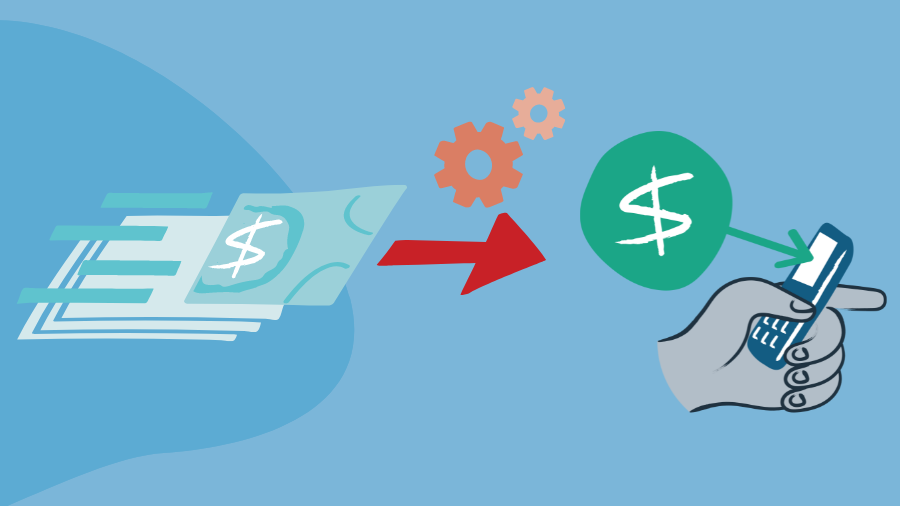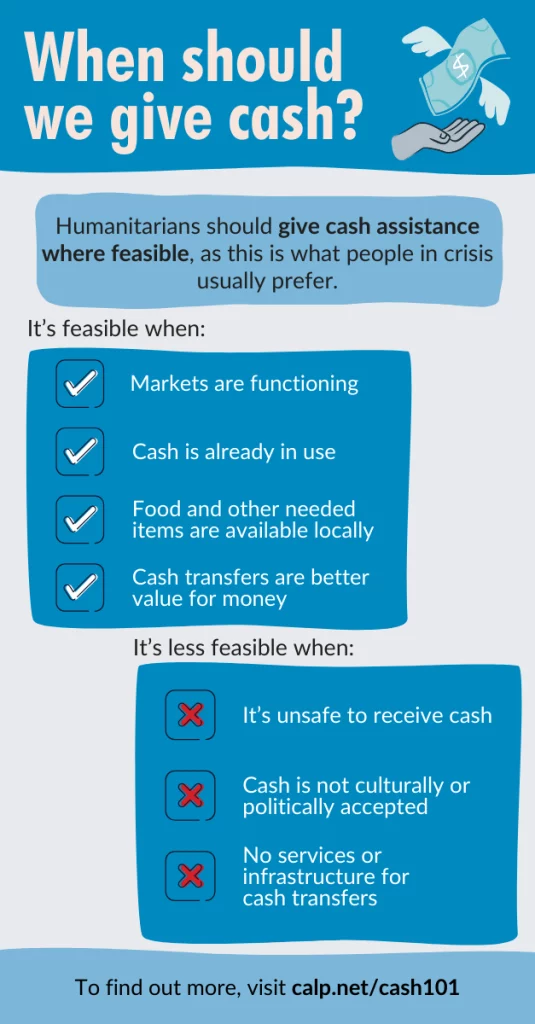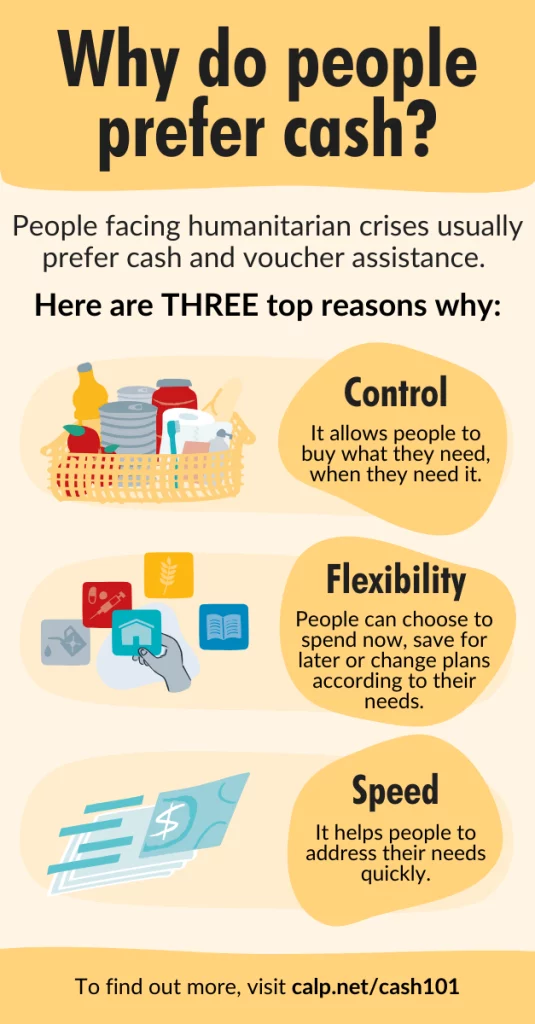What are Cash Transfers?

What are Cash Transfers?
Humanitarian cash transfers are payments of money to people so that they can buy what they need in a crisis. They are a type of humanitarian aid that is used as an alternative to, or alongside, in-kind aid or vouchers. The umbrella term for both cash and vouchers within the humanitarian sphere is “Cash and Voucher Assistance”, or CVA.
People can use them to:
- Buy food in a market following displacement due to conflict.
- Pay a contractor to rebuild a home following a hurricane.
- Purchase flood-resistant crops ahead of predicted floods.
- Many other things.
They can be given to people as physical cash in hand, or via a digital transfer, such as mobile money. Unlike vouchers, cash is unrestricted so people can use it to buy the goods and services of their choice.
Different types of cash transfers
There are different types of cash transfers, such as:
- Unconditional cash transfers provide people affected by a crisis with money without having to do anything in order to receive assistance
- Conditional cash transfers require recipients to carry out an activity in order to receive payments. Examples of conditional cash transfers are building a shelter or going to a nutrition screening.
- Multipurpose cash assistance (MPC) provides recipients with the amount of money required to cover, fully or partially, their basic needs. Cash transfers are ‘multi-purpose’ if they are specifically designed to cover the cost of multiple needs as opposed to specific needs such as health care.
How much and how often cash payments are given to people varies. People might receive a one-off lump sum, or a weekly or quarterly payment, depending on what best suits their needs, and the objectives of the programme.
Before deciding if and which type of cash assistance is most suitable, aid providers will assess the specific conditions of a crisis and the needs of the people affected. Considerations, like if activities need to be carried out to help recovery, if vulnerable people will be excluded by conditions, or if local government support cash transfers should be factored in.
To find out more, visit CVA Delivery on Cash 101.

Why are cash transfers important?
Cash transfers are important as they provide dignity and choice to people affected by crises.
Other benefits are:
- People affected by crisis often say that receiving cash as aid gives them a greater sense of control in a crisis, relative to other forms of assistance. Ground Truth interviews with aid recipients in the Central African Republic showed people felt they had more choice with cash in hand to vouchers or in-kind aid.
“The vouchers that we are given are bound to selected shops that we cannot choose. There the prices are very high, and we have no choice but to accept them. If we were given cash instead, we would be much better off.” – Village head in Paoua, CAR
- People often prefer cash transfers to any other type of humanitarian assistance. They give people the flexibility and freedom to choose what they need. According to key informants in Yemen, 90% to 100% of households said they prefer CVA.
- Cash transfers can be more cost-efficient than vouchers and in-kind aid in the right context.
- Cash has the potential to transform humanitarian response overall. One key area is how cash transfers are driving more local and diverse humanitarian action. As cash operates alongside other financial flows, such as government-led social protection programmes, they can support a more localised response – when appropriately designed and implemented. Research shows there are many opportunities to increase the use and scale of CVA.
- Cash transfers can provide a bridge between humanitarian, development and social protection programmes. For example, emergency cash can be scaled up through existing social protection systems following a disaster, complementing efforts to address underlying factors that contribute to instability and poverty.

Are cash transfers effective?
Cash transfers are a very effective type of aid for people affected by crises.
For example they can be:
- Better value for money than in-kind assistance, meaning that funding stretches further and reaches more people. An assessment across four countries (Ecuador, Niger, Uganda, and Yemen) found that humanitarian budgets could have reached 18% more people if everyone had been given cash, not food.
- More cost-efficient when scaled to reach more people, and the longer the programme has been running. However, cost-effectiveness is dependent on context, and efficiency values can decrease in more complex emergency situations.
For more examples of the effectiveness of cash, visit Benefits of CVA.
What are some examples of programmes using cash transfers?
Cash assistance should be designed to meet the needs of the target population and the individual context of the crisis.
They have been used in programmes such as:
- Supporting refugees and host communities in a migration crisis: Since 2019, the VenEsperanza Consortium has provided ongoing multipurpose cash transfers to over 400,000 highly vulnerable people in Colombia affected by the Venezuelan crisis. Recipients receive cash transfers over six months to meet their basic needs and improve living conditions and family nutrition.
- Helping with early recovery: A 2020 ICRC cash transfer programme in the Philippines helped people who were suffering from a loss of livelihood due to armed conflict in the Lake Sebu region. Cash grants were given to support basic needs and livelihoods to farmers who were unable to work in their fields due to conflict leading to economic struggles. The project set up an outdoor market to make it easier for people to buy farming inputs, food and other basic needs. This not only saved transportation costs but also supported local businesses.
Read more about unconditional and conditional cash on Cash 101.